| 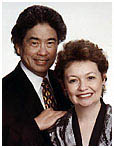 Effective
Teaching...
Effective
Teaching...
by Harry and Rosemary
Wong
January
2005
The First Ten
Days of School
You’re almost
to the hump of the school year and you still have discipline problems
in your classroom. Over 80 percent of what teachers
consider to be discipline problems have nothing to do with discipline.
The number one problem in the classroom
is not discipline;
it is the lack of procedures and routines.
A vast majority of the behavior problems in the classroom
are caused by the failure of students to follow procedures and
routines. The behavior problems result from the
lack of procedures that govern how the classroom is organized
for work. So, instead of working, the students do things
they should not be doing, but it’s not their fault. There
are no procedures outlining how things are to be done in the classroom.
To eliminate or reduce the number of discipline
problems,
it is necessary to have
an organized classroom management plan.
Two of the chatboards on teachers.net are “classroom discipline”
and “classroom management.” Many of the items posted
under classroom management have nothing to do with management;
they are about discipline problems.
To review the difference between discipline and classroom management,
please read Chapters 11 and 20 in The First Days of
School and “The Problem Is Not Discipline.”
(https://teachers.net/wong/SEP00)
Of course, behavior problems do occur no matter how organized
you have your classroom. It’s a fact of life.
However, your effectiveness as a teacher will be based on how
well you manage a classroom with procedures and routines, not
on how well you discipline your class.
Nonetheless, you will still need a discipline plan as part of
your greater classroom management plan. Considering the
great diversity of students, with differing skills, languages,
cultures, and needs, and the different personalities of teachers,
your choice of a plan will be a personal one.
Discipline plans fall along a continuum.
You may feel comfortable with a plan where the teacher is strongly
in charge or one where the student is in charge. To see
this continuum, refer to page 142 in The First Days
of School.
The Self-Manager Discipline Plan
It may suit your style to use a discipline plan where there is
a mutual sharing of responsibility for the classroom.
Jane Slovenske, who teaches fifth grade in Arizona, uses a “self-manager
plan” in which students are taught to be responsible for
managing their own behavior.
The class discusses a list of appropriate behaviors and standards
that relate to responsible behavior, appropriate treatment of
others, and prompt work completion to the best of their ability.
Once the list of behaviors is agreed upon, the students are presented
with a “self-manager application” to use as a self-evaluation
of their behaviors and standards.
When students are able to manage all of the items on the application,
they fill in the form and take it home for parental review.
When parents are in agreement with their child’s self-evaluation,
it is to be signed and returned to school.
Jane must then agree with the student’s self-evaluation.
They discuss any differences of opinion and come to an agreement.
Jane Slovenske says that this rarely happens, as most students,
with input from their parents, are honest about self-evaluating
their performance.
Students rated as “almost always” in each category
become Self-Managers and qualify to wear a badge that says, “I’m
a SELF-MANAGER.” A picture of such a student can be seen
on page 167 in The First Days of School,
(3rd ed.).
Staff and students recognize and acknowledge Self-Managers by
the badges they wear.
More information on the Self-Manager Discipline Plan can be found
on page 163 in The First Days of School,
(3rd ed.).
To Manage Is to Organize
Jane Slovenske’s success as a teacher—she is a National
Board certified teacher—goes way beyond her discipline plan.
Her success can be traced to how she manages her classroom
right from the first day of school.
There is nothing that will take kids into orbit faster
than to suspect that a teacher is disorganized.
Classrooms are disorganized, because some teachers do not have
a classroom management plan. The result is a chaotic classroom.
When there is no organization, a teacher will resort to disciplining
students to maintain control of the students, which is why so
many teachers write on the chatboard, wanting to know “what
to do with some kid.” You don’t do things to
people; you teach people to be responsible.
Structuring a Well-Managed Classroom
A well-managed classroom has a set of
procedures and routines
that structure the classroom for learning.
Procedures and routines are used to organize the classroom
so that the myriad of activities that take place in a classroom
function smoothly and stress-free. Procedures allow
a wide variety of activities to take place during the school day,
often simultaneously, with a minimum of confusion and wasted time.
If there are no procedures, much time is wasted organizing and
explaining each activity, even for recurring activities.
The lack of procedures also leads to students’ acquiring
undesirable work habits and behaviors that are subsequently hard
to correct.
Students readily accept the idea of having a uniform
set of classroom procedures because it simplifies their task of
succeeding in school.
It’s All in How You Begin
Jane Slovenske’s success with her students begins on the
very first day of school. She spends the first ten days
of school teaching and reinforcing those behaviors and standards
her students will need to succeed in her classroom. In addition
to the academic instruction, these are the procedures Jane Slovenske
teaches on the first ten days of school:
Day 1
TEACH:
Removing from backpacks everything needed for the day.
Arrangement of everything in student’s desk.
Classroom number for each student to identify personal cubby.
Organizing binders using dividers.
Heading on every paper handed in.
Using an agenda to record assignments.
Appropriate time to sharpen a pencil, get a drink, ask to use
restroom, or go to cubby.
Procedures for attendance and lunch count.
Lining up alphabetically if buying lunch.
Where to sit at lunch and five people to each side of table.
Handshake or enthusiastic high five with eye contact to greet
teacher each morning before entering the classroom.
Procedures for handing in work.
Procedures for handing out papers.
Procedures for using supplies in team crates.
Procedures for asking a question.
Fire drill procedures.
Lining up for specials and dismissal.
Signal for quiet and focus on teacher.
Procedures for water bottles and healthy snacks.
School rules.
Day 2
TEACH:
Checking projection system for morning procedures.
Procedures for using classroom computers.
REINFORCE:
Handshake or enthusiastic high five with eye contact to greet
teacher each morning before entering the classroom.
Removing from backpacks everything needed for the day.
Arrangement of everything in student’s desk.
Classroom number for each student to identify personal cubby
and include on all papers handed in.
Heading on every paper handed in.
Appropriate time to sharpen a pencil, get a drink, ask to use
restroom, or go to cubby.
Procedures for attendance and lunch count.
Lining up alphabetically if buying lunch.
Five people to each side of lunch table.
Procedures for handing in work.
Procedures for handing out papers.
Procedures for using supplies in team crates.
Lining up for specials and dismissal.
Signal for quiet and focus on teacher.
Day 3
TEACH:
Handing in assignments, as well as notes and forms for teacher.
Emergency procedures if teacher is hurt or ill.
How to complete classroom jobs.
Self-manager rubric.
REINFORCE:
Enthusiasm, eye contact when greeting teacher
as entering classroom.
Removing from backpacks everything needed for the day.
Checking projection system for morning procedures.
Heading on every paper handed in.
Using an agenda to record assignments.
Appropriate time to sharpen a pencil, get a drink, ask to use
restroom, or go to cubby.
Lining up alphabetically if buying lunch.
Five people to each side of lunch table.
Procedures for attendance and lunch count procedures.
Procedures for using classroom computers.
School rules.
Day 4
TEACH:
Computer lab procedures.
REINFORCE:
Enthusiasm, eye contact when greeting teacher as entering classroom.
Removing from backpacks everything needed for the day.
Checking projection system for morning procedures.
Heading on every paper handed in.
Using an agenda to record assignments.
Appropriate time to sharpen a pencil, get a drink, ask to use
restroom, or go to cubby.
Lining up alphabetically if buying lunch.
Five people to each side of lunch table.
Procedures for attendance and lunch count procedures.
Procedures for using classroom computers.
School rules.
Fire drill procedures.
Handing in assignments, as well as notes and forms for teacher.
Emergency procedures if teacher is hurt or ill.
How to complete classroom jobs.
Day 5
TEACH:
Procedures in completing classroom jobs according to job descriptions
worksheet.
Procedures for using math Versatiles.
Procedures when assigned work is completed.
REINFORCE:
Enthusiasm, eye contact when greeting teacher as entering
classroom.
Removing from backpacks everything needed for the day.
Checking projection system for morning procedures.
Heading on every paper handed in.
Using an agenda to record assignments.
Appropriate time to sharpen a pencil, get a drink, ask to use
restroom, or go to cubby.
Lining up alphabetically if buying lunch.
Five people to each side of lunch table.
Handing in assignments, as well as notes and forms for teacher.
Self-manager rubric.
Day 6
TEACH:
Procedures for checking spelling words.
Procedures for lockdown drill.
REINFORCE:
Enthusiasm, eye contact when greeting teacher as entering classroom.
Removing from backpacks everything needed for the day.
Checking projection system for morning procedures.
Heading on every paper handed in.
Using an agenda to record assignments.
Appropriate time to sharpen a pencil, get a drink, ask to use
restroom, or go to cubby.
Lining up alphabetically if buying lunch.
Five people to each side of lunch table.
Handing in assignments, as well as notes and forms for teacher.
Self-manager rubric.
Procedures in completing classroom jobs according to job descriptions
worksheet.
Procedures for using math Versatiles.
Procedures when assigned work is completed.
Day 7
REINFORCE:
Enthusiasm, eye contact when greeting teacher as entering
classroom.
Removing from backpacks everything needed for the day.
Checking projection system for morning procedures.
Heading on every paper handed in.
Using an agenda to record assignments.
Appropriate time to sharpen a pencil, get a drink, ask to use
restroom, or go to cubby.
Lining up alphabetically if buying lunch.
Five people to each side of lunch table.
Handing in assignments, as well as notes and forms for teacher.
Self-manager rubric.
Procedures in completing classroom jobs according to job descriptions
worksheet.
Procedures for checking spelling words.
Procedures for handing out papers.
Using supplies from team crates.
Emergency procedures if teacher is hurt or ill.
Day 8
REINFORCE:
Enthusiasm, eye contact when greeting teacher as entering classroom.
Removing from backpacks everything needed for the day.
Checking projection system for morning procedures.
Heading on every paper handed in.
Using an agenda to record assignments.
Appropriate time to sharpen a pencil, get a drink, ask to use
restroom, or go to cubby.
Lining up alphabetically if buying lunch.
Five people to each side of lunch table.
Handing in assignments, as well as notes and forms for teacher.
Procedures in completing classroom jobs according to job descriptions
worksheet.
Procedures for checking spelling words.
Procedures for lockdown drill.
Computer lab procedures.
Day 9
TEACH:
Procedures for participating in a class meeting including giving
compliments and taking turns speaking without raising your hand.
REINFORCE:
Enthusiasm, eye contact when greeting teacher as entering classroom.
Removing from backpacks everything needed for the day.
Checking projection system for morning procedures.
Heading on every paper handed in.
Using an agenda to record assignments.
Appropriate time to sharpen a pencil, get a drink, ask to use
restroom, or go to cubby.
Handing in assignments, as well as notes and forms for teacher.
Procedures in completing classroom jobs according to job descriptions
worksheet.
Day 10
REINFORCE:
Enthusiasm, eye contact when greeting teacher as entering classroom.
Removing from backpacks everything needed for the day.
Checking projection system for morning procedures.
Heading on every paper handed in.
Using an agenda to record assignments.
Appropriate time to sharpen a pencil, get a drink, ask to use
restroom, or go to cubby.
Lining up alphabetically if buying lunch.
Handing in assignments, as well as notes and forms for teacher.
Procedures in completing classroom jobs according to job descriptions
worksheet.
Procedures for participating in a class meeting including giving
compliments and taking turns speaking without raising your hand.
But, It’s January
So, why are we sharing Jane Slovenke’s first ten days of
school with you now in January? There are three reasons:
1. Notice Jane TAUGHT
the procedures. She did not tell the students. She
demonstrated, the students practiced, and the concepts were reviewed
and REINFORCED. Too often, teachers equate
“telling” or “showing” with teaching.
Just as you teach the letters of the alphabet, how to hit a baseball,
or solving binomial equations, procedures are taught—just
like any curriculum.
2. After reading Jane’s
list, you may recognize an area of your classroom management plan
you’ve neglected. Her listing is comprehensive; leaving
little if anything to chance. So should your plan be likewise.
Use Jane’s plan to fill in the gaps for your plan.
3. You may be facing a new
semester or you could be on a year-around schedule. This
is a perfect time to start fresh or tweaking what you already
have in place.
Jane’s classroom management plan incorporates her discipline
plan. Your plan for addressing disruptions in the classroom
should be part of your comprehensive classroom management plan.
If you don’t have a system in place, use one of the plans
detailed in Chapter 19 of The First Days of School.
Modify it to suit your style and classroom situation. You
must have a plan in place so that your students know what to expect
if problems occur in the classroom.
The Beauty of Teaching
It doesn’t need to be January 1st to start anew.
Each day is a fresh, new day for you and your students.
If your classroom is not humming like a well oiled machine, look
through Jane Slovenske’s list for insights into repairing
the problem. Ask a colleague for insights into your dilemma;
ask your administrator for assistance. Each day is filled
with valuable moments for learning opportunities. Don’t
waste another day waiting for next year when tomorrow is all you
need.
As you venture into 2005, may your learning opportunities be
many and may the light of learning sparkle in the eyes of all
of your students.
 For a printable version of this article click
here.
For a printable version of this article click
here.
Harry & Rosemary Wong products: http://www.harrywong.com/product/
Email Harry Wong: harrywong@teachers.net
Gazette Articles by Harry & Rosemary Wong:
If you spot a link that appears to be out-of-date, please alert us at webmaster@teachers.net!
- A Grateful Goodbye After 15 Years (Jun 2015)
- Love, Marriage, and Babies, Oh My! (May 2015)
- Retention Rate Is 100 Percent (Apr 2015)
- Teacher Effectiveness and Human Capital (Mar 2015)
- Training Teachers to Be Effective (Feb 2015)
- Making Deals Is Ineffective (Dec 2014 / Jan 2015)
- Retrieving and Carrying Electronic Devices (Nov 2014)
- Sharing to Succeed (Oct 2014)
- How a University Prepares Its Students (Sep 2014)
- Effective Teaching (Aug 2014)
- Your Future Is in Your Hands (June/July 2014)
- The Classroom Management Book (May 2014)
- When Students Succeed; Teachers Succeed (April 2014)
- Teaching New Teachers How to Succeed (March 2014)
- Execute and Praise (February 2014)
- Shaping a Solid Foundation (Dec 2013 / Jan 2014)
- The Most Misunderstood Word (November 2013)
- How to Start Class Every Day (October 2013)
- Prevention: The Key to Solving Discipline Problems (September 2013)
- Planning, Planning, Planning (August 2013)
- Are You THE One? (June / July 2013)
- Practical Examples That Work (May 2013)
- A Disability Is Not a Handicap (Apr 2013)
- Totally Inexcusable (Mar 2013)
- Be Proud of Public Education (Feb 2013)
- Structure Will Motivate Students (Dec 2012 / Jan2013)
- Orchestrating the Classroom (Nov 2012)
- The Lasting Impact of Instructional Coaching (Oct 2012)
- Learning, Laughing, and Leaving a Legacy (Sep 2012)
- Twenty-two, First Year, and Legit (Aug 2012)
- A Master Teacher of Teachers (June/July 2012)
- Where Going to School Means Success (May 2012)
- A Nationally Celebrated High School (Apr 2012)
- The Highest Rated School in New York City, Part 2 (Mar 2012)
- The Highest Rated School in New York City, Part 1 (Feb 2012)
- The Importance of Culture (Dec 2011 / Jan 2012)
- You Can Teach Classroom Management (Nov 2011)
- Seamless, Transparent, and Consistent (Oct 2011)
- Coaching Teachers to Be Effective Instructors (Sep 2011)
- How a Principal Creates a Culture of Consistency (Aug 2011)
- Graduation Begins in Your Classroom (June/July 2011)
- The Inspiration of a Mother (May 2011)
- How to Be an Effective Leader (Apr 2011)
- Learning Objectives: The Heart of Every Lesson (Mar 2011)
- Even Shakespeare Had Structure (Feb 2011)
- Effectiveness Defined: It's Not a Mystery (Dec 2010 / Jan 2011)
- Surviving Without a Principal (Nov 2010)
- Achieving Greatness: Locke Elementary School, Part 2 (Oct 2010)
- Teaching Greatness: Locke Elementary School, Part 1 (Sep 2010)
- Effective from the Start (Aug 2010)
- Ten Year Summary of Articles, 2000 to 2010 (June/July 2010)
- The Success of a Culture of Consistency (May 2010)
- Training Teachers to Be Effective (Apr 2010)
- Learning to Teach, Teaching to Learn (Mar 2010)
- Turning Teaching Dreams into Reality (Feb 2010)
- Dreams and Wishes Can Come True (Dec 2009 / Jan 2010)
- Success in a State Controlled School (Nov 2009)
- Inner City Is Not An Excuse (Oct 2009)
- Exceeding All Expectations (Sep 2009)
- Teachers Are the Difference (Aug 2009)
- Nine Year Summary of Articles, 2000 to 2009 (Jun/Jul 2009)
- Teachers Are the Greatest Assets (May 2009)
- The Tools for Success (Apr 2009)
- Assessing for Student Learning (Mar 2009)
- To Be an Effective Teacher Simply Copy and Paste (Feb 2009)
- The Sounds of Students Learning and Performing (Dec 2008)
- A School That Achieves Greatness (Nov 2008)
- Boaz City Schools: Professional Learning Teams (Oct 2008)
- It Was Something Close to a Miracle (Sep 2008)
- A Computer Teacher Shows the Way (Aug 2008)
- Eight Year Summary of Articles, 2000 to 2008 (Jun/Jul 2008)
- An Amazing Kindergarten Teacher (May 2008)
- Schools That Beat the Academic Odds (Apr 2008)
- Academic Coaching Produces More Effective Teachers (Mar 2008)
- Coaches Are More Effective than Mentors (Feb 2008)
- Wrapping the Year with Rap! (Dec 2007/Jan 2008)
- The Floating Teacher (Nov 2007)
- Taking the Bite Out of Assessment—Using Scoring Guides (Oct 2007)
- Ten Timely Tools for Success on the First Days of School (Sep 2007)
- First Day of School Script - in Spanish, Too! (Aug 2007)
- Seven Year Summary of Articles, 2000 to 2007 (Jun 2007)
- Effective Teachers End the Year Successfully (May 2007)
- Training Gen Y Teachers for Maximum Effectiveness (Apr 2007)
- Classroom Management Applies to All Teachers (Mar 2007)
- Students Want a Sense of Direction (Feb 2007)
- Rubrics in Two College Classes (Dec 2006/Jan 2007)
- How to Write a Rubric (Nov 2006)
- Assessing Student Progress with a Rubric (Oct 2006)
- A 92 Percent Homework Turn-in Rate (Sep 2006)
- Effective Teachers Are Proactive (Aug 2006)
- Five Year Summary of Articles (Jun 2006)
- Hitting the Bulls Eye as a Beginning Teacher (May 2006)
- They're Eager to Do the Assignments (Apr 2006)
- The Success of Special Ed Teachers (Mar 2006)
- What Teachers Have Accomplished (Feb 2006)
- Fifty Years Ago, The Legacy (Dec 2005/Jan 2006)
- The Emergency Teacher (Nov 2005)
- Classroom Management Is Not Discipline (Oct 2005)
- A Successful First Day Is No Secret (Sep 2005)
- The Most Important Factor (Aug 2005)
- Four Year Summary of Articles (Jul 2005)
- Improving Student Achievement Is Very Simple (Part 2) (Jun 2005)
- Improving Student Achievement Is Very Simple (Part 1) (May 2005)
- Never Cease to Learn (Apr 2005)
- His Classroom Is a Real Life Office (Mar 2005)
- The Power of Procedures (Feb 2005)
- The First Ten Days of School (Jan 2005)
- PowerPoint Procedures (Nov/Dec 2004)
- The Saints of Education (Oct 2004)
- How Procedures Saved a Teacher's Life (Sep 2004)
- How to Help Students with Their Assignments (Aug 2004)
- Three Year Summary of Articles (Jun/Jul 2004)
- His Students are All Certified (May 2004)
- What to Do When They Complain (Apr 2004)
- A Well-Oiled Learning Machine (Mar 2004)
- The Effective Teacher Adapts (Feb 2004)
- How to Start a Lesson Plan (Aug 2003)
- Applying for a Teaching Job in a Tight Market - Part 2 (Jun/Jul 2003)
- Applying for a Teaching Job in a Tight Market (May 2003)
- The Effective Substitute Teacher (Apr 2003)
- A First Day of School Script (Mar 2003)
- How to Retain New Teachers (Feb 2003)
- No Problem With Hurricane Lili (Dec 2002)
- A Class Size of 500 (Nov 2002)
- Effective Practices Apply to All Teachers (Oct 2002)
- Dispensing Materials in Fifteen Seconds (Sept 2002)
- How To Start School Successfully (Aug 2002)
- Teaching Procedures Is Teaching Expectations (June - July 2002)
- $50,000 to Replace Each Teacher (May 2002)
- Even Superintendents Do It (Apr 2002)
- Impossible, No Job Openings? (Mar 2002)
- A Stress Free Teacher (Feb 2002)
- A Most Effective School (Jan 2002)
- Van Gogh in Nine Hours (Dec 2001)
- The Effective Teacher Thinks (Nov 2001)
- How a Good University Can Help You (Sep 2001)
- How to Motivate Your Students (May 2001)
- How to Recognize Where You Want to Be (Apr 2001)
- What Successful New Teachers Are Taught (Mar 2001)
- A Journey of the Heart (Feb 2001)
- The Miracle of Teachers (Jan 2001)
- It's Not the Students. It's the Teacher. (Dec 2000)
- The First Five Minutes Are Critical (Nov 2000)
- How to Start a Class Effectively (Oct 2000)
- The Problem Is Not Discipline (Sep 2000)
- There Is Only One First Day of School (Aug 2000)
- Applying for Your First Job (Jul 2000)
- Your First Day (Jun 2000)
Browse through the latest posts from the Classroom Management
Chatboard...
|




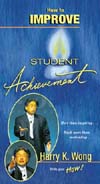
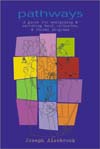


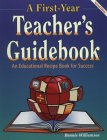
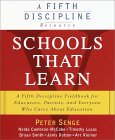

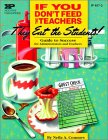
 Effective
Teaching...
Effective
Teaching...